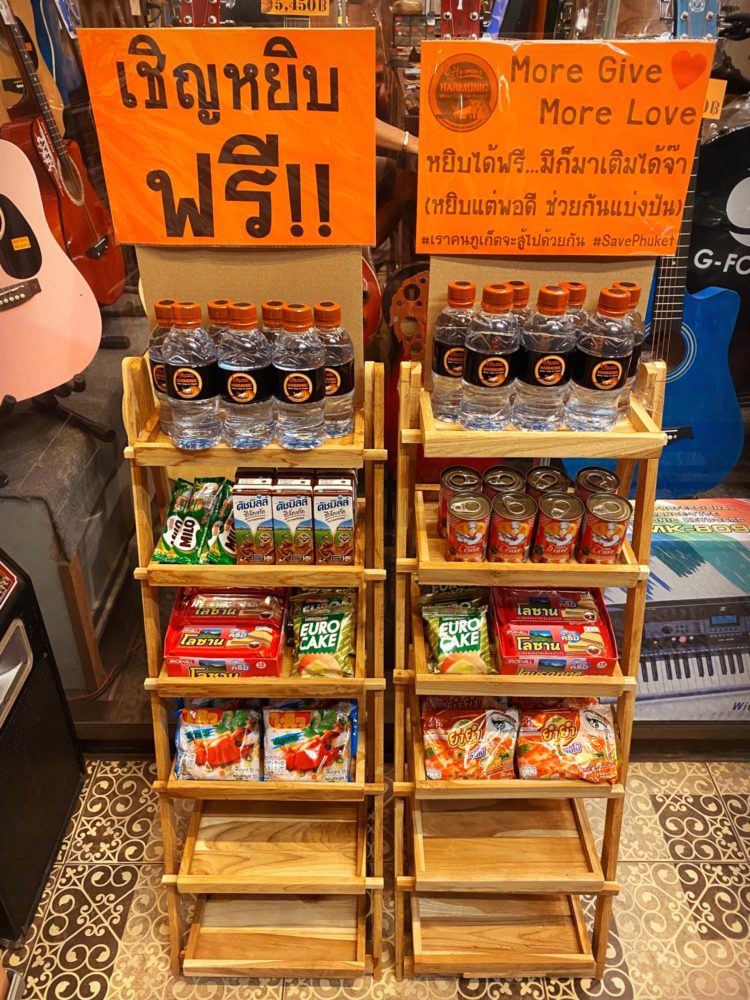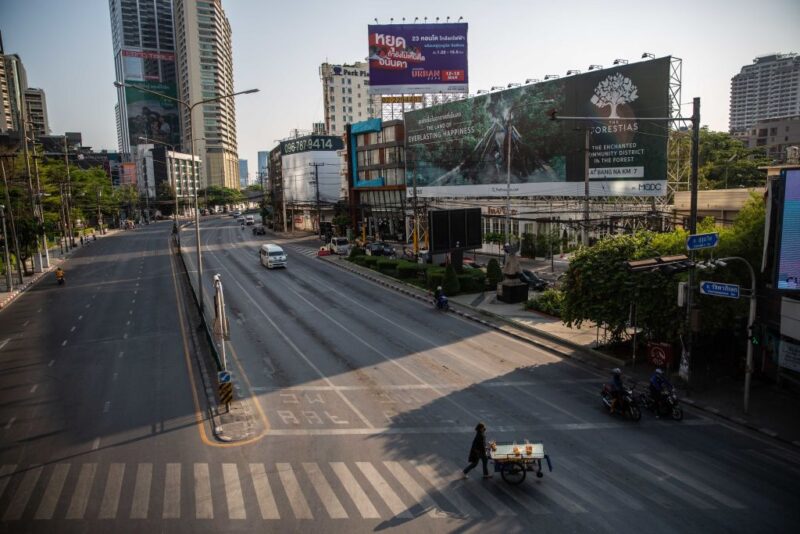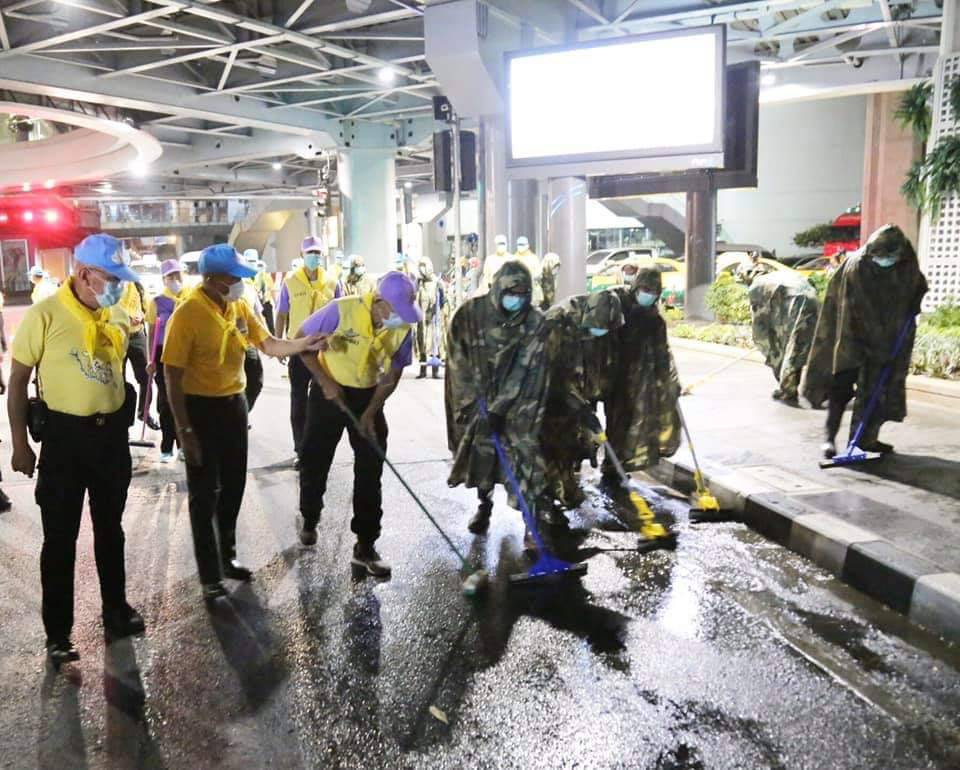The pandemic and lockdown have revealed the importance of community and connection. Staying at home has made us appreciate what is local, close and personal. And it is communities, sometimes more than governments and global businesses, that have rallied round to help each other.
There are many examples of this in Thailand, such as “The Pantry of Sharing” project. The project invites donations of non-perishable food items and basic hygiene supplies to central pantries where those suffering are free to take what they need.
Many local brands have been playing a role in the community too. Tops supermarket is working with the Ministry of Commerce and Thai farmers to help them sell seasonal fruits with guaranteed prices. Thai people have also been supporting local farmers and producers by buying from them directly. Facebook and other social media are being used to build awareness of local businesses in need of help.
Global crisis, local interventions
Although the pandemic is global, the most effective countermeasures have been taken at the local level, be they from national or local government, businesses or communities themselves. Arguably this reflects practical realities on the ground, but it happens at a time when global institutions such as UN, EU, and WHO appear to be in decline. Even where global efforts could potentially have a huge impact, such as supplies of medical equipment or the search for a vaccine, there has been much less coordination between countries than in previous crises.
Global businesses have been impacted by these dynamics and even more by the disruption to global supply chains. Many businesses are rethinking at least some aspects of globalization. One of the long-term impacts of Covid-19 may be a return to more local supply chains and self-sustaining economic models.
Global resilience
Governments are certainly thinking along these lines, although their approaches will depend on the natural resources and economy that they have available to them. Singapore and Thailand provide an interesting comparison, between a resource-poor, densely populated and urbanised small island, and a resource-rich kingdom with a huge agricultural industry and rural population.
Singapore is known for its planned economy and food security has been a long-term focus, developing a strategy following a food crisis in 2007-8 with the Singapore Food Agency (SFA) formed last year. With only 1% of land devoted to agriculture and 90% of food imported, Singapore has been developing alternative ways to grow, stockpile and secure food supplies from outside.
They have implemented vertical farming, using urban spaces, rooftops and specially designed buildings to increase production. They have also been developing technological innovations such as hydroponics, alternative plant-based proteins, and digitalizing supply chains. Singapore currently imports food from 170 countries and has a philosophy of ‘resilience’. Their resilience comes from diversity.
Local self-sufficiency
By contrast, Thailand is a huge exporter of food. Like Indonesia and the Philippines, it is able to produce its own food and stand on its own feet, making it largely self-sufficient (e.g., for rice). Indeed, the philosophy of ‘self-sufficiency’ has strong roots in Thailand and may become a greater focus in the future (as seen in the Tops initiative).
On a different topic, Singapore and especially Thailand benefit from global travel and tourism. For the immediate future, the economic impact of reduced travel will continue to hit both countries. As countries begin to re-open, how much will people want to return to old travel patterns? And will countries like Thailand want to become less reliant on global travel and more reliant on local tourism?
The economies of small-scale
Well before the current crisis, there was a noticeable trend toward stronger local brands. The economies of scale are no longer such a huge competitive advantage. Local companies can acquire the technology and know-how to produce products that are just as good as those made by global companies. Global companies such as Unilever and P&G have been losing market share in many Asian markets.
Local brands have stronger local community roots and also a deeper understanding of their local culture. The beauty category is a great example of this. Global beauty brands often reflect a very ‘Western’ view of beauty values, which is less relevant in Asia. In Indonesia, Wardah has grown to be the number one beauty brand across multiple beauty categories. The number one beauty brand in most Asian markets is a local brand (Thailand is one of the exceptions, but this may change).
The power of local connection
Mass marketing was historically another competitive advantage for global brands. While it remains a powerful tool, online platforms give consumers the ability to reach niche products and Covid-19 has highlighted the ability of small businesses to sell directly to individual customers. The impact of Covid-19 on digitalisation will be the topic of our next article.
In summary, people have shifted to a more community-focused mindset. Local brands and small businesses can build on this goodwill to create more sustainable businesses. Global brands need to carefully reconsider the benefits of global networks and messaging and customise their products and messaging to local markets. Size, scale and centralisation are not what they used to be, and the future of brands lies in the strength of their local connections.
About Culture Kitchen
Culture Kitchen combines cultural insight with marketing, branding and behavioural change know-how to help you plan your brand’s future growth. Click here to download our free ebook covering the 7 Ways that Covid-19 will Shape the Future of Brands.
About the Study
The findings are the result of a collaboration between insights consultancies across 17 countries. The effort was led by Beyond Research, based in Milan, and covered North and South America, Europe, Middle East and Asia-Pacific. Desk research covered multiple data sources including local country case studies, Google search trends, newspaper articles, and social media along with country-level cultural analysis.






